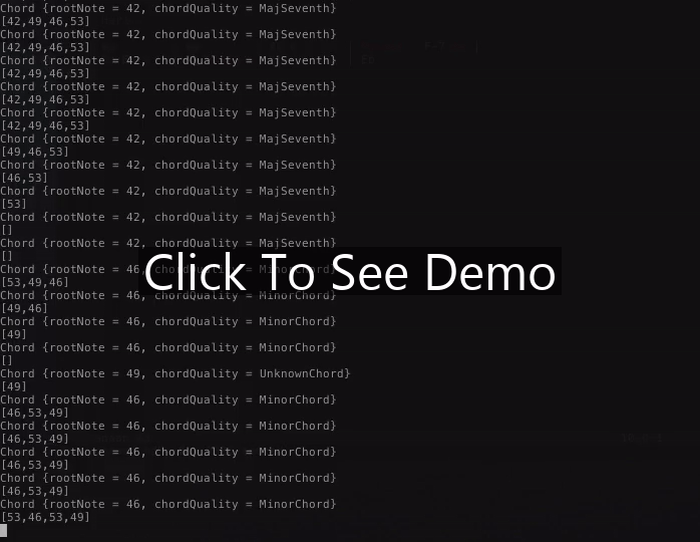This project aims to imitate some of the cool features found in 80's home organs, such as the Drudel organ. These features typically include things like built-in rhythms to play along to and automatic accompaniment based on the chord that is played in the left hand.
This project allows such features to be used with MIDI software instruments on a PC. It does so by listening for MIDI inputs from a MIDI controller, modifying those messages, and forwarding the modified messages to the MIDI software of your choice. It hence requires a virtual MIDI port to be present on the computer it is being run on, to which it can write MIDI messages and which your MIDI software instruments can listen to (more on this below).
The following features are currently supported:
Beats are percussive rhythms that the player can play along to.
HRave divides the MIDI controller into halves: the upper halves control the melody, and the lower half controls chords. Holding a chord in the lower half will cause that cord to be played in a rhythm that fits with the current Beat being played.
When a chord is held in the lower half of the midi controller, a bass line will automatically be played which fits the current Beat being played. The exact notes that are played in the bass are automatically determined by the chord which is being held.
When a chord is held in the lower half of the midi controller, that chord can be "overlayed" on the melody being played in the upper half. That is, when the player plays a single note in the right hand, the produced sound will be the chord being held in the left, but inverted such that the melody note is on top, and transposed to be as close below the melody note as possible. This gives a "fat" sound without the need for the player to be skilled.
To build this, you need Stack.
To use the software, you need a virtual MIDI device that HRave can write midi messages to, and that the software instrument can listen to. Below are instructions for how to set this up on different operating systems
On linux, we use Alsa's Midi Through ports. To verify that you have a Midi
Through port, run aplaymidi -l and make sure a client named Midi Through is
in the list. If not, you need to enable the snd-seq-dummy kernel module. Use a
search engine of your choice to figure out how to do this on your distro.
This page describes how to set up a virtual midi connection on macOS
TODO
To compile:
stack build
To run:
stack run
Or run:
stack install
Which should put the executable in a location that is in your $PATH. Then you
can simply run hrave and the program will start.
When you run the program, it will ask you for a MIDI input device and a MIDI outuput device. For the input device, select your MIDI controller. For the output device, select a virtual MIDI port (as described above). In your software instrument, you need to select the same virtual MIDI port as your input.
This software listens for MIDI messages on channel 0 of the input device, and outputs messages on multiple channels on the virtual MIDI port. Each output channel is used for one part of the music, e.g. percussion, bass, chords, melody and chord melody. Hence, you need to configure your software instrument so that each channel is routed to an instrument appropriate for that part. For instance, the bass channel should be routed to a bass instrument, the drum channel to a drum instrument, etc. The diagram below should make this more clear:
The drum channel uses the drum sounds of General MIDI, so make sure to use a drum kit that supports this.
This project is built using Haskell and reactive-banana , a Haskell library for functional reactive programming.
